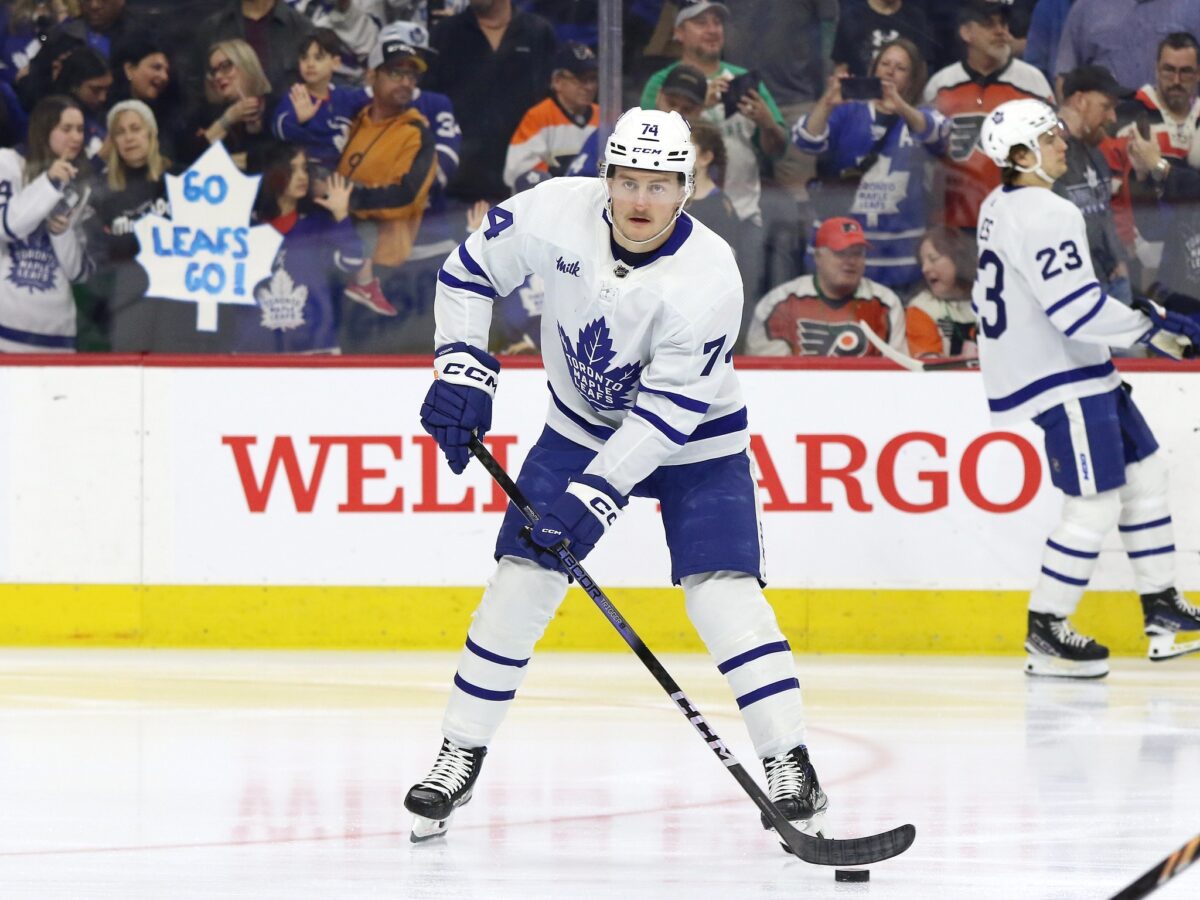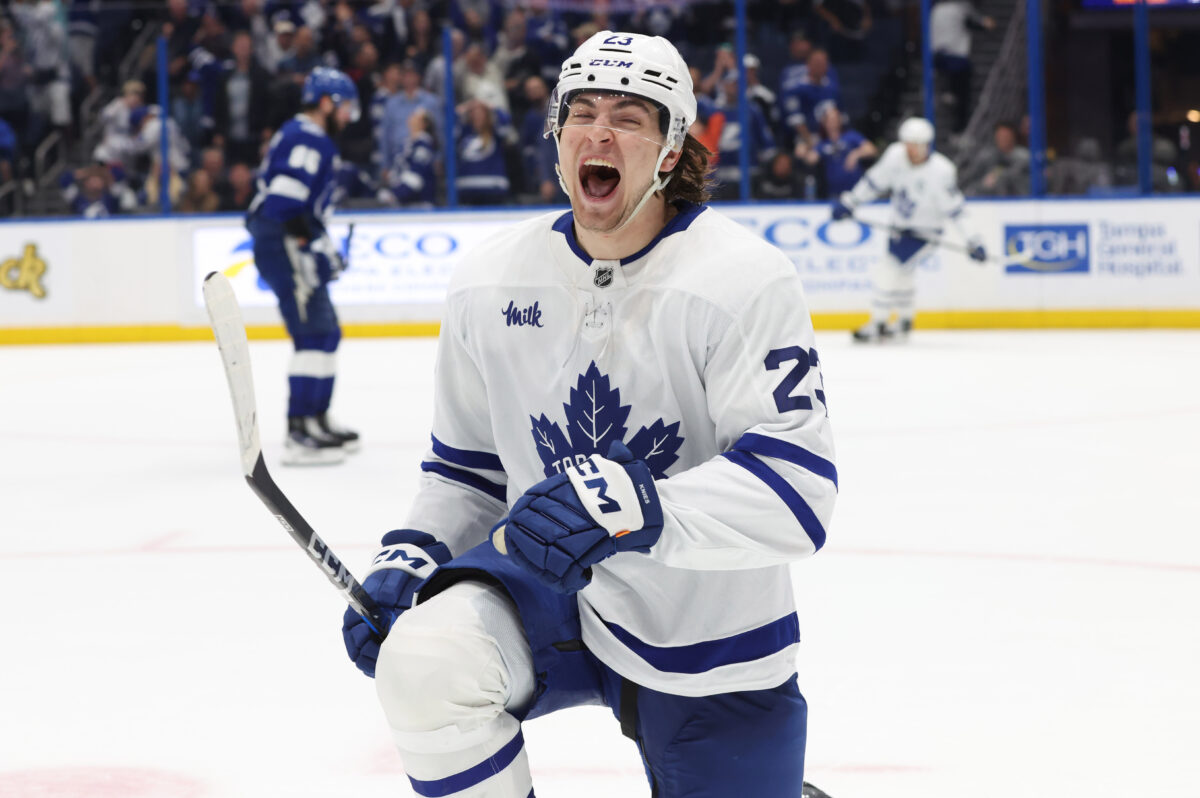The Toronto Maple Leafs’ early-season struggles in 2025-26 are too big to ignore. On Tuesday, general manager Brad Treliving addressed his club’s poor start, acknowledging that the team hasn’t performed up to expectations and accepting blame while reinforcing his faith in head coach Craig Berube.
To their credit, the team responded with a 3-2 overtime victory over the St. Louis Blues last night, snapping a five-game losing skid. But while the win might have left some room for optimism, it’s hard to be excited about conceding a point to a Blues squad that is now 6-9-5 on the season.
Soon, Treliving and the Maple Leafs will need to assess whether to march ahead with a win-now move or if they should punt on this season and accept what could be their first playoff miss since 2015-16. No one wants to think about the latter option, but at this point, it has to be considered.
The Maple Leafs as Sellers
Even if the season continues to go south for the Maple Leafs, don’t expect a full-scale teardown during the campaign, especially since they’ve already surrendered their first-round draft picks in 2026 (conditionally, anyway) and 2027. But Treliving could still accumulate draft assets or add young talent.
The most obvious trade candidates are pending free agents, but the Maple Leafs’ four-year extension for Anthony Stolarz in September leaves few options to come off the books. Scott Laughton, Calle Jarnkrok, Sammy Blais and newcomer Troy Stecher won’t yield strong returns in a trade. Meanwhile, Matias Maccelli and Nicholas Robertson are headed for restricted free agency. The club’s best trade chip among those in need of new contracts might be Bobby McMann, who is fresh off his first career 20-goal season.

The name that gained the most trade traction in the offseason was 2025 trade deadline acquisition Brandon Carlo. But his value has diminished substantially since last March, and it’s unlikely they would recoup the same assets they sent to Boston for him (Fraser Minten, a first-round pick and a fourth-round pick).
Having most of the current core locked up long-term looked like an encouraging sign of stability. Now, amidst a difficult start, all that committed money ($84.6 million for 2026-27) looks like an albatross around the club’s neck. With that in mind, the front office has to be listening to offers for any player not named Auston Matthews, William Nylander, Matthew Knies, John Tavares or Easton Cowan.
Toronto Tank Time?
Tanking is rare and a bad word in the parity-driven NHL – and rightfully so. Given the Maple Leafs’ situation, however, it might be the only way to carve out a viable future for the franchise. The Carlo trade netted the Bruins Toronto’s 2026 first-round draft pick, albeit with top-five protection. That protection might have been added to shield the team against drastically unforeseen circumstances, but those circumstances are becoming more plausible by the game. As of today, the club has the second-lowest point total in the Eastern Conference.
Extolling the virtues of tanking feels dirty and ridiculous. However, the conditions are clear: Toronto will either keep a draft pick that lands in the No. 1-5 range or lose it. Granted, this would merely kick the issue down the road until the traded pick converts, but that shouldn’t be a problem if the organization thinks these struggles are a one-year anomaly.
If losing ultimately means giving injury-prone players like Matthews and Stolarz extra time off to rest this season, and opens the possibility of landing a top prospect, then it’s an option that will have to be considered should they continue down this path.
You Might Also Like
- 3 Options Canadiens Have to Fill in for Injuries
- 2 Blues Who Should Be on the Bruins’ Trade Radar
- Maple Leafs News & Rumours: Matthews, Stolarz, Tanev, Berube & the Rule of 3
- NHL 2025-26 Power Rankings: Week 6
- Canucks News and Rumours: Pettersson, Hughes, Patera & Kampf
Long-Term Implications for Maple Leafs
If the outlook for this season is murky, the long-term plan is even murkier. After all, the Maple Leafs are driven by a core of in-their-prime forwards (Matthews is 28, Nylander is 29), supported by experienced veterans (John Tavares is 35, the average age of the top-six defence corps is 31). Quite simply, they are built to win now.
If the Maple Leafs continue to struggle amidst strong play from young, upstart rivals like the Montreal Canadiens and Bruins, then it’s hard to ignore the possibility that the window has closed for the current core. But, to be fair, while the hoped-for playoff breakthroughs haven’t come, this group has delivered on nine consecutive postseason appearances and nearly a decade of regular-season greatness.

For all the criticism this early in the season, it’s easy to lose sight of the fact that there’s a lot of value here. Even without a budding farm system, Knies (23) and Cowan (20) make for a strong potential youth movement. Players like Matthews and Nylander should remain productive contributors for the next chapter of Maple Leafs hockey, while plenty of others offer decent trade value. If a pivot is required, then getting younger and faster while retaining some of the current core could be a viable path – look at what the Bruins are doing right now.
For now, the hope is that the current group can figure things out and turn the ship around. But as one of the NHL’s oldest teams finds itself struggling in the face of a new-look Atlantic Division, it seems clear that tough decisions and uncomfortable conversations are coming sooner or later – and right now, it’s looking sooner rather than later.
